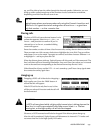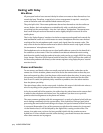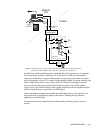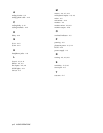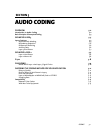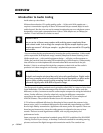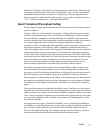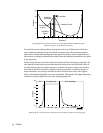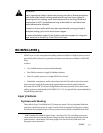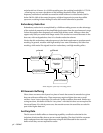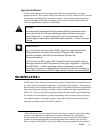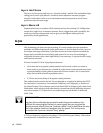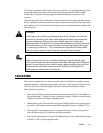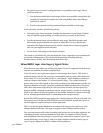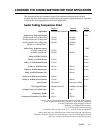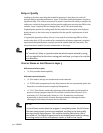
CODING 5-5
w
IMPORTANT!
Due to a perceptual coder’s reliance on precise principles of human perception,
audio to be coded should not be processed with any non-linear dynamics-
processing such as clipping, multi-band compression or limiting. Wideband
compression or AGC is acceptable and may be desirable if a consistent level
cannot otherwise be achieved.
The same is true to audio which has been decoded after passing through a
perceptual coding cycle, but to much lesser degree.
For more information contact Telos Systems customer support for a copy of a
paper delivered at the AES by Frank Foti on this topic.
ISO/MPEG LAYER 3
MPEG Layer 3 is the most powerful coding method available in ZephyrExpress, and we
particularly like it because it is perfectly matched to the bitrates available on ISDN BRI
lines.
It offers:
• 15 or 20kHz mono or stereo audio bandwidth.
• Full-fidelity mono on a single 56/64kbps channel.
• Near-CD quality stereo
1
on a single ISDN Telco circuit.
• Affordable, transparent, audio transmission for AM/FM radio or television audio.
After extensive testing by broadcasting organizations around the world under the
direction of the CCIR, it has been designated as the most powerful of the three audio
coding systems standardized in ISO/MPEG IS-11172. It is specifically recommended for
56 and 64 kbps channels.
Layer 3 Features
Psychoacoustic Masking
The audio in Layer 3 is divided into 576 frequency bands. First, a polyphase filterbank
performs a division into the 32 “main” bands which correspond in frequency to those
used by the less complex Layer 2. Filters are then used to further subdivide each of the
1
20kHz bandwidth, 96dB dynamic range... just like a CD. The encoding process can
cause some loss that a trained listener, using carefully-selected program material and
good monitors, could detect. But most people won’t hear the loss, and there’s no
accepted way to measure it.



